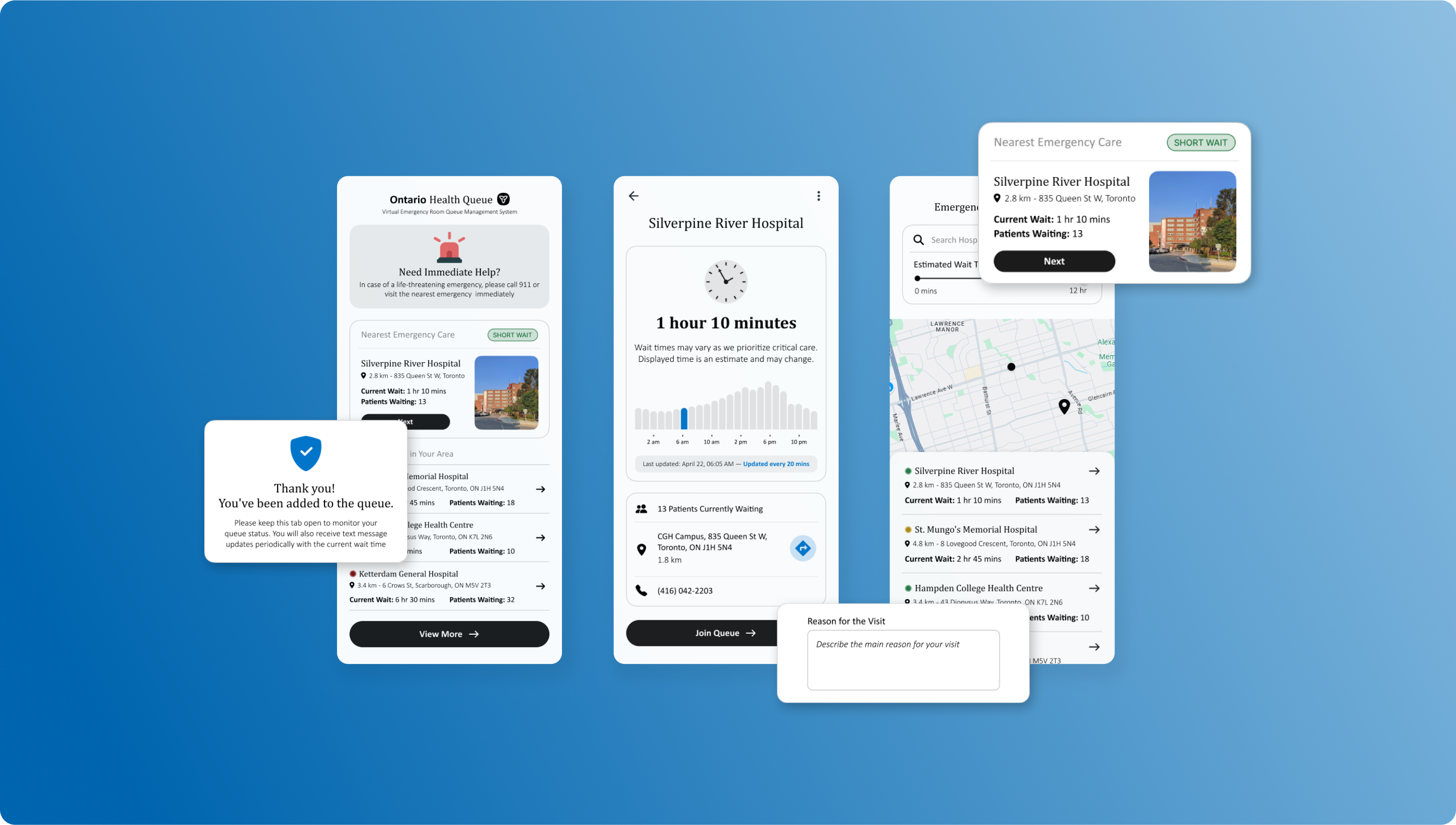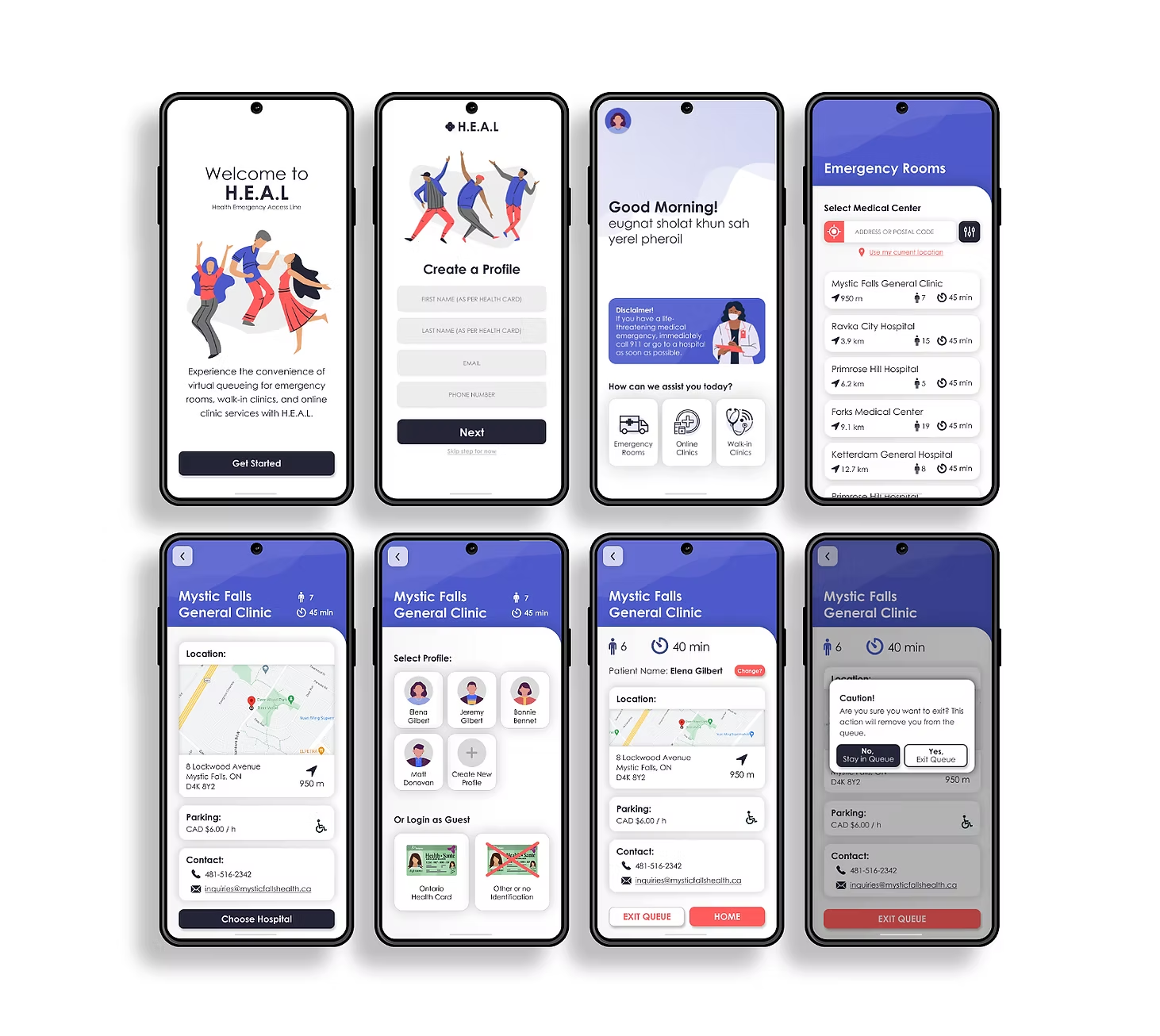Ontario Health Queue
Creating a Virtual Queue System to streamline emergency room visits and improve patient satisfaction.

Ontario Health Queue
Creating a Virtual Queue System to streamline emergency room visits and improve patient satisfaction.

My Role
Product Thinking, Product Design, Ux Research, Visual Design, Usability testing
Timeline
December 2024 (2 weeks)
Breakdown of the process
DISCOVER

App Name
'H.E.A.L' doesn’t clearly convey its function. Playful tone also feels out of place for a healthcare app.
Landing Page and Greeting
Wordy landing page and greeting slow users down. Remove them for faster access to core features.
Onboarding
Onboarding is incomplete and disruptive. Show wait times first, then ask for details.
Profile Creation
Mandatory profiles don’t fit a sporadic-use emergency app. Make profiles optional.
Graphics
Current visuals feel generic and misaligned with healthcare. Use relevant & purposeful imagery.
UI Design
Bright, playful UI hurts credibility. A cleaner, more restrained design would build trust.
DEFINE
FINAL DESIGN
Revisiting User Flows

Is this flow too simple?
Yes, and that’s intentional. As a healthcare app designed for users in moments of stress or urgency, simplicity is essential to ensure that users can quickly and easily navigate through the process without confusion or unnecessary complexity.
FINAL DESIGNS
